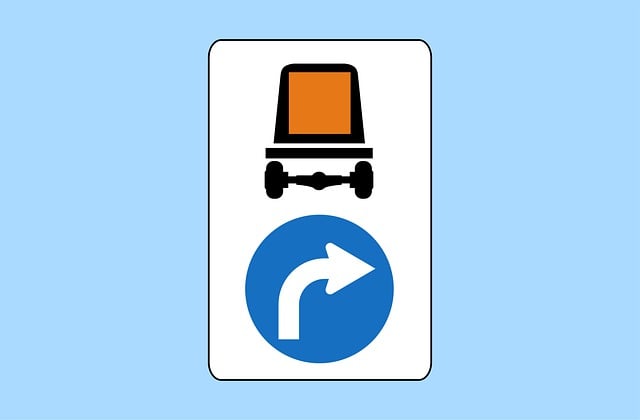Semaglutide, a GLP-1 receptor agonist, is recognized for managing type 2 diabetes and facilitating weight loss by mimicking natural body hormones. To get prescribed semaglutide, individuals must meet specific eligibility criteria set by healthcare professionals, including age restrictions, high HbA1c levels, comorbidities, and commitment to regular monitoring. The process begins with a consultation where your provider assesses your medical history, discusses benefits and risks, explains how semaglutide works, and creates a tailored treatment plan. Providing detailed medical history is crucial for tailoring the treatment. Diagnostics and tests are conducted to assess eligibility, followed by strict adherence to the prescribed plan, regular communication with your doctor, and management of potential side effects. After securing the prescription, consistent communication throughout refills and care instructions ensures effective condition management.
“Discovering how to get a semaglutide prescription involves a structured process designed to ensure safety and efficacy. Semaglutide, a versatile medication, offers medical benefits for various conditions. This comprehensive guide walks you through each step, from understanding its uses to ongoing care. Learn about eligibility criteria, the importance of sharing your medical history, setting treatment goals, and managing potential side effects. By following these steps, you’ll gain insight into navigating the path to obtaining a semaglutide prescription.”
Understanding Semaglutide and Its Medical Uses

Semaglutide is a medication that has gained significant attention for its role in managing type 2 diabetes and promoting weight loss. It belongs to a class of drugs known as glucagon-like peptide-1 (GLP-1) receptor agonists, which mimic the effects of a natural hormone produced by your body. By imitating GLP-1, semaglutide helps regulate blood sugar levels, stimulates insulin production when needed, and suppresses appetite, leading to increased feelings of fullness.
When considering getting prescribed semaglutide, it’s crucial to understand its medical uses beyond diabetes management. Clinical trials have shown promising results for its weight-loss benefits, making it a potential option for individuals struggling with obesity or overweight. This medication can be particularly effective when combined with lifestyle modifications such as a healthy diet and increased physical activity. Understanding semaglutide’s mechanism of action and its diverse medical applications is essential for those seeking to explore this treatment option for diabetes management or weight loss.
Eligibility Criteria for a Semaglutide Prescription

To get prescribed semaglutide, individuals must meet specific eligibility criteria set by healthcare professionals and regulatory bodies. Generally, prescriptions are considered for patients with type 2 diabetes who have not achieved their blood sugar goals through lifestyle changes and oral medications alone. It’s important to note that each patient’s unique medical history and current health status are thoroughly evaluated before prescribing semaglutide.
Eligibility may include age restrictions, typically requiring patients to be at least 18 years old, as well as certain metabolic markers like high HbA1c levels indicating chronic hyperglycemia. Comorbidities such as cardiovascular disease or obesity might also play a role in determining eligibility. Patients should be willing and able to commit to the prescribed treatment regimen, which includes regular monitoring and follow-up appointments.
Consulting with Your Healthcare Provider

When considering getting a prescription for semaglutide, the first step is to schedule a consultation with your healthcare provider. This meeting is crucial as they will evaluate your medical history, current health condition, and lifestyle to determine if semaglutide is suitable for you. During the consultation, be open and honest about any medications or treatments you’re currently undergoing, as well as any concerns or questions you may have about the drug.
Your healthcare provider will discuss the potential benefits and risks of semaglutide, considering factors like your blood sugar levels, body mass index (BMI), and overall health goals. They’ll also explain how semaglutide works, its typical prescription process, and any necessary monitoring or tests that may be required before and during treatment. This collaborative discussion is essential to ensure a safe and effective use of semaglutide tailored to your unique needs.
Providing Comprehensive Medical History

When preparing for a semaglutide prescription, providing a comprehensive medical history is a crucial step. Your healthcare provider needs to understand your overall health and any pre-existing conditions that might affect your treatment with this medication. This includes discussing your weight loss journey, dietary habits, and any medications or supplements you’re currently taking. A detailed medical history helps the doctor tailor the treatment plan to your specific needs and ensures safety throughout the process of getting prescribed semaglutide.
Additionally, be ready to disclose any health concerns, surgeries, or allergies. This open dialogue allows your provider to assess if semaglutide is suitable for you and make informed decisions regarding dosage and potential side effects. Remember, a comprehensive medical history forms the foundation for effective treatment and should be approached with honesty and thoroughness.
Discussing Treatment Options and Goals

When considering a semaglutide prescription, discussing treatment options and goals is a crucial step. This involves an open conversation with your healthcare provider about your specific health needs, preferences, and lifestyle. Semaglutide, a medication used for weight management and type 2 diabetes, offers various advantages but may not be suitable for everyone. Understanding the benefits and potential side effects helps in setting realistic expectations and determining if this treatment option aligns with your personal objectives.
During this discussion, you can explore different weight loss strategies, including lifestyle modifications like diet and exercise plans, alongside semaglutide therapy. Your doctor will assess your overall health, medical history, and current medications to ensure getting prescribed semaglutide is the best course of action for you. They will also clarify how this medication works, its potential impacts on your body, and any necessary precautions or monitoring requirements.
Undergoing Necessary Diagnostics and Tests

Before you can get a prescription for semaglutide, you’ll need to undergo certain diagnostics and tests. This is an essential step in the process as healthcare providers must assess your overall health and eligibility for this medication. The first consideration is typically your medical history and current condition. During your consultation, be prepared to discuss any previous or existing health issues, medications you’re currently taking, and your general well-being. Your doctor will use this information to determine if semaglutide is suitable for you.
Additionally, specific tests may be ordered to evaluate your eligibility. These could include blood tests to check cholesterol levels, HbA1c readings to assess blood sugar control, or even imaging scans in certain cases. These diagnostics are crucial in understanding your health profile and ensuring the safe and effective use of semaglutide for getting prescribed.
Following the Prescription and Monitoring Progress

After obtaining a prescription for semaglutide, it’s crucial to follow the plan set forth by your healthcare provider. This involves adhering strictly to the dosage and administration guidelines. Semaglutide is typically administered once weekly via injection, so it’s essential to maintain a consistent schedule. Regular communication with your doctor is vital; they will monitor your progress through routine check-ups, where they’ll assess your blood sugar levels and evaluate any potential side effects.
During these appointments, your doctor may adjust the dosage or provide additional guidance based on your response to the treatment. Staying engaged in this process ensures optimal management of your condition and the best possible outcomes when getting prescribed semaglutide.
Potential Side Effects and Management Strategies

When considering a semaglutide prescription, it’s vital to be aware of potential side effects and be prepared with management strategies. Common side effects include nausea, vomiting, diarrhea, and constipation, which can often be managed through diet adjustments and medication changes recommended by your healthcare provider. These may involve trying different meal timings or compositions to ease gastrointestinal discomfort.
Additionally, weight loss can be a significant effect, requiring careful monitoring and support. Regular check-ins with your doctor are crucial for adjusting the dosage or exploring alternative treatments if needed. Staying hydrated and engaging in light physical activity can also help mitigate side effects. Remember, open communication with your healthcare team is key to successfully navigating any challenges while getting prescribed semaglutide.
Refill and Ongoing Care Instructions

Once you’ve successfully gotten a semaglutide prescription, understanding refill and ongoing care instructions is crucial for effective management. Your healthcare provider will guide you on the frequency of refills, typically every 3 months, ensuring a steady supply of your medication. Regular follow-up appointments are essential to monitor your progress, adjust dosage if needed, and discuss any potential side effects or concerns.
During these visits, be prepared to discuss your blood glucose levels, weight changes, and overall well-being. Your doctor may also recommend additional tests or screenings to ensure the safety and effectiveness of semaglutide for your specific needs. Remember, consistent communication with your healthcare team is key to navigating the getting prescribed semaglutide process successfully.
